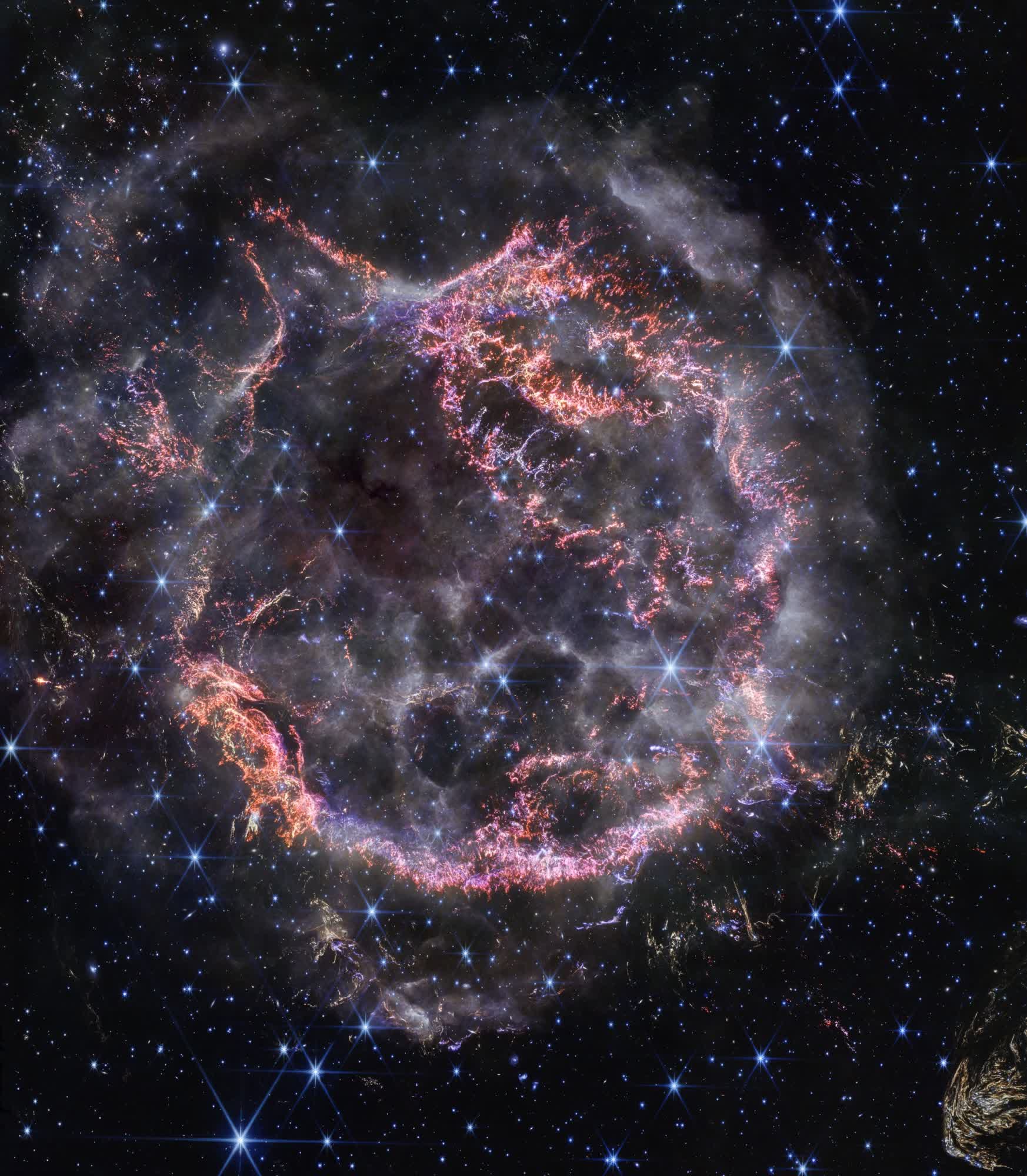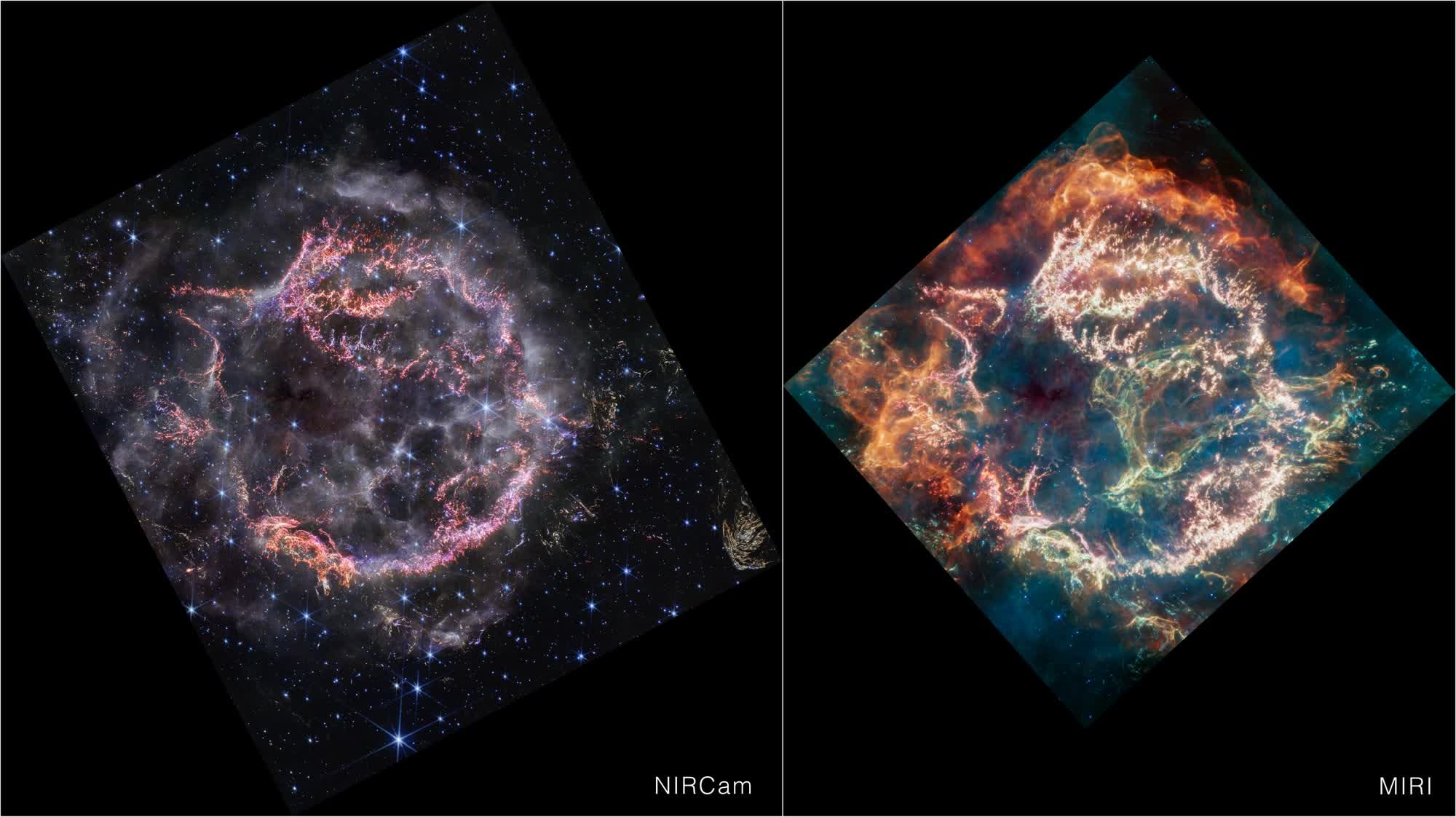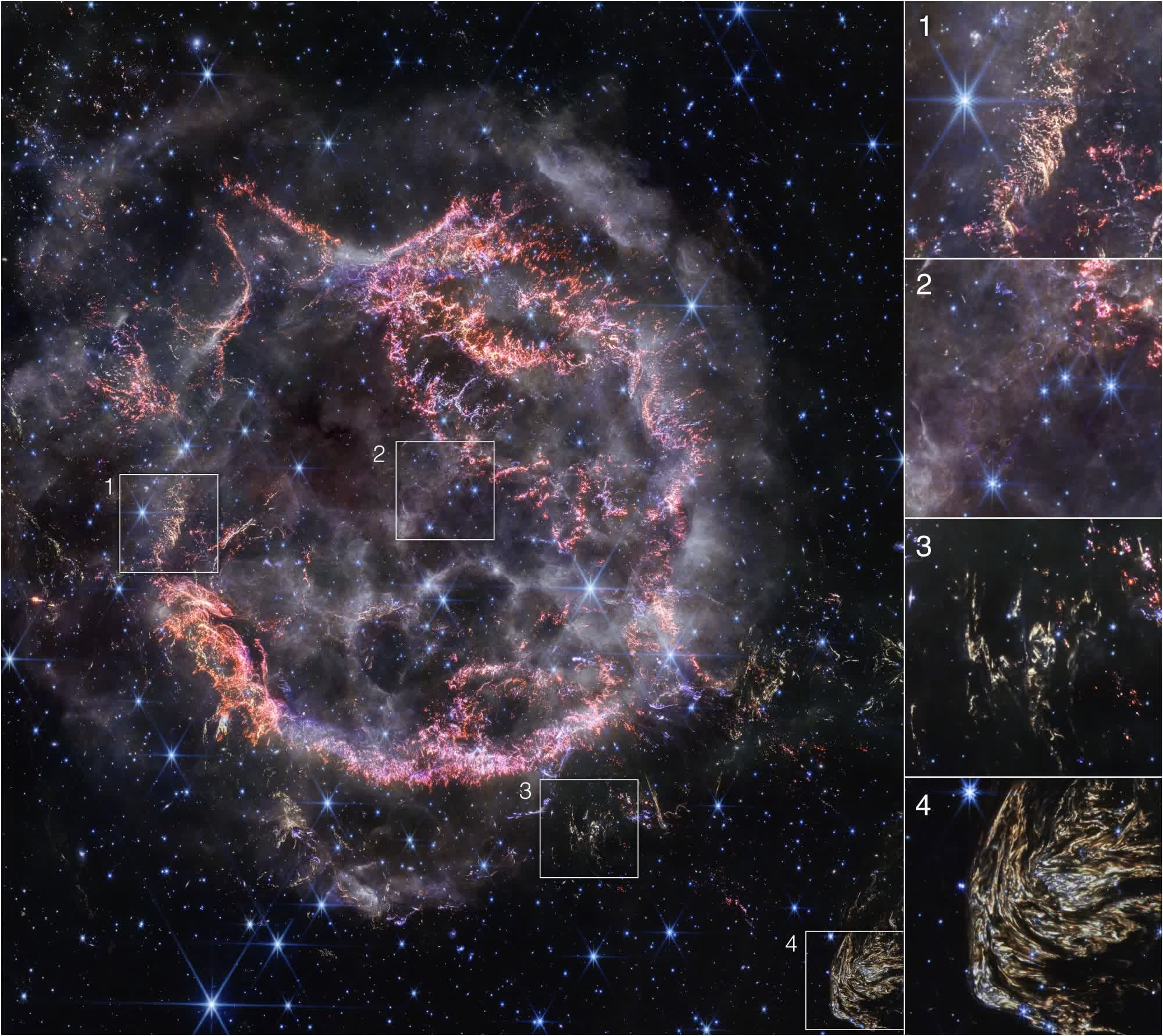Why it matters: Launched nearly two years ago and in service for 17 months, NASA's James Webb Space Telescope (JWST) continues to make countless discoveries throughout the galaxies. This time, it gave people a better look into a supernova remnant close to the Earth, and even discovered a new interesting quirk.

Cassiopeia A (Cas A) is a remnant of a supernova located approximately 10,000 light years away from our planet. For decades, the best photo available of Cas A was taken by the JWST's predecessor, the Hubble Space Telescope. The image, taken in 2004, was outstanding for the time, though severely limited by Hubble's already-aging technology.
With the updated technology featured on the JWST, NASA has finally given people a new look into Cas A, thanks to the first-ever "White House Advent Calendar." These newer photos of Cas A allow many of the remnant's breathtaking colors to be seen for the very first time with the JWST's Near Infrared Camera (NIRCam). NASA compares Cas A to that of a "shiny, round ornament" fit for a Christmas tree.
Despite how colorful the image may be, there is still lots of activity in the photos that we cannot see. Thankfully, NASA can take advantage of the Mid-Infrared Instrument (MIRI) in order to get an even deeper view of Cas A. While NIRCam goes from 0.6 to 5.0 microns, MIRI's range stretches from 5 to 28 microns. For comparison, Hubble's camera ranged between 0.1 and 0.8 microns.

The photo taken using JWST's MIRI is more vibrant than the image from NIRCam and reveals quirks about Cas A that hadn't been discovered before. For example, large amounts of dust can be seen within the photo from MIRI, while it is entirely missing from NIRCam's image.
NASA noticed a large "loop of green light" within the center of Cas A, which researchers nicknamed the "Green Monster." However, the Green Monster's location is seemingly outlined in NIRCam's image by ionized gas. According to researchers, this is caused by "supernova debris pushing through and sculpting gas left behind by the star before it exploded."

The image taken by NIRCam also allowed NASA to make another discovery relating to Cas A. In the bottom right of the photo, researchers discovered a striated blob (seen above in #4), which they determined to be a "light echo" of the original supernova. They fittingly named this blob "Baby Cas A," believing it appeared "like an offspring of the main supernova."
In under a year and a half, the JWST continues to make countless brilliant discoveries across the universe. Despite the Cas A supernova being discovered by astronomers over 340 years ago, the existence of Baby Cas A was unknown until recently. So now begs the question: What other secrets of the universe will JWST uncover?
Image credit: NASA, ESA, CSA, STScI, Danny Milisavljevic (Purdue University), Ilse De Looze (UGent), Tea Temim (Princeton University)
https://www.techspot.com/news/101185-nasa-releases-photos-nearby-supernova-lighting-up-space.html